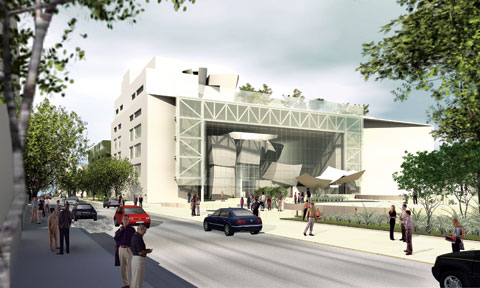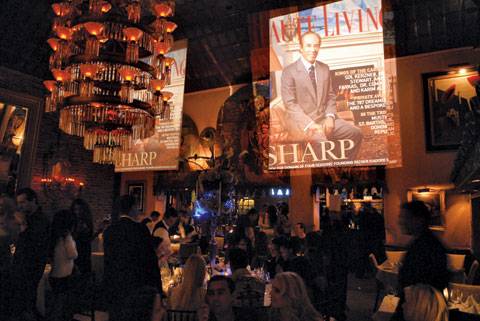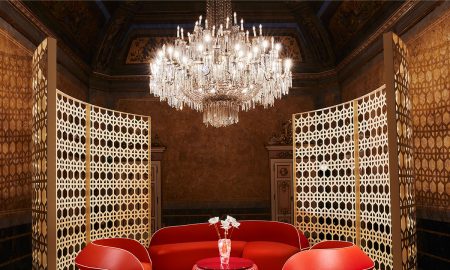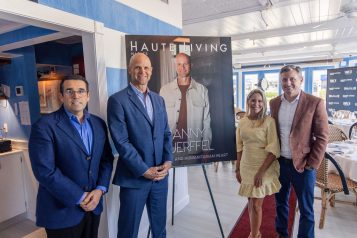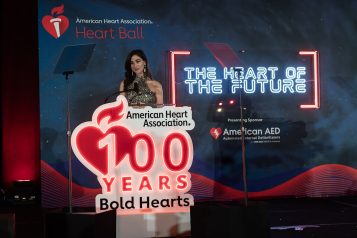“I think my best skill as an architect is the achievement of hand-to-eye coordination.”
It is being marketed as “Brilliance in the Making,” and there is no doubt that this structure holds up to its reputation. It is the final stepping-stone that Miami Beach has made on the way to the city’s defining itself not only as a haven for beachside revelers, but as an international player in the world of culture. The new campus for the New World Symphony, designed by Pritzker Prize-winning Frank Gehry, the genius behind such architectural wonders as the titanium-covered Guggenheim Museum in Balboa, Spain, and Walt Disney Concert Hall in Los Angeles, will cement Miami-Dade’s place amongst New York and Los Angeles as a cultural capital in the United States.
The Miami area has been moving in that general direction since the initial founding of the New World Symphony in 1987 by Michael Tilson Thomas, an award-winning conductor, pianist, and composer. Art Basel Miami Beach was then established in 2002, which brought in works from some of the world’s most renowned artists and piqued the international art sector’s interest, causing them to put their spotlight on the exploding metropolis. Next came the construction of the Adrienne Arsht Center for the Performing Arts of Miami-Dade County (formerly known as the Carnival Center), alongside the plans for the anticipated Museum Park in Bicentennial Park.
The addition of these institutions alongside the already established cultural havens will ensure that South Florida will no longer be known solely for its rowdy spring breakers and glamorous hotels; city planners and developers continue to infuse greater Miami with locales that are testaments to the area’s promising future.
As the city’s cultural offerings continue to evolve, it is time for its premiere cultural establishment to do so as well. The NWS’s home in theunassuming yellow Art Deco Lincoln Theatre on the corner of Lincoln Road and Pennsylvania Avenue garners little attention from the throngs of visitors and locals who scamper down Lincoln in search of refreshments and entertainment, excluding the nights when concerts are broadcasted on the building’s exterior speakers. The theater seats only 702 people and is generally sold-out for each of its shows.
More often than not, the fellows of the NWS are the ones putting on these concerts. NWS is a three-year fellowship program that aims to prepare graduates of distinguished music programs for fulltime positions in top orchestras around the globe. Throughout the course of the fellowship year, which runs from October to May, NWS presents a series of concerts and presentations including full-concert orchestras, new music series, small ensemble concerts, and more, 33 percent of which are offered to the public free of charge. The 87 fellows represent the best musicians from schools around the country, and they leave the program with the potential of becoming some of the most remarkable musicians in the world. More than 700 alumni of the NWS are in 167 leading ensembles
worldwide, a testament to the program’s success.
“The New World Symphony started out as an intriguing ‘what if?’-along with a few chairs and music stands,” says Thomas. “Less than two decades later, people tell us we’re a rallying point for the music-making of the future. As a teacher and a musician, I find that extremely gratifying.”
When the city of Miami Beach announced thatthe plot of land currently located behind the New World Symphony Center’s new campus, which then held a parking lot, was being offered to the most appropriate builder, a plan started to form in Thomas’ mind. His one-of-a-kind program had long outgrown its current space, which is not only
too small but also has inferior sound systems, soundproofing, and a severe lack of amenities and technology. It was certainly time for an upgrade.Thomas and Gehry are childhood friends, so when Thomas approached the architect about an exciting
new possibility available in Miami Beach, Gehry didn’t hesitate. “When the New World Symphony came along as a possibility, I guess you could say it was a dream come true for me to be able to dig in and work with Michael on something that’s near and dear to his heart.”
The project is Gehry’s first in Florida, one that is expected to attract global attention to the city, undoubtedly one of the many reasons NWS’s bid for the land got the city’s stamp of approval. The interesting façade will result in an edifice that will define Miami Beach in the world’s eye alongside the stunning Art Deco buildings that have been the
face of the city for decades.
To the layperson, Gehry’s sketch for the new campus looks like a mess of squiggles, but the master architect had a vision for a space that will allow the NWS to flourish. “I think my best skill as an architect is the achievement of hand-to-eye coordination,” says Gehry. “I am able to transfer a sketch into a model into a building.” His vision results in a performance hall that will be constructed in the round, with a 740-seat audience surrounding the stage on all sides. Aside from the stunning design features, Gehry was selected for the project thanks to his superior ability to design halls with near perfect acoustics. “I have quite a taste for a lot of contemporary [classical] music,” Gehry explains. “The patterns of making it somehow relate to the patterns of making architecture.”
“Frank Gehry loves music, and he’s the perfect architect for the building,” says Thomas. “His design embodies everything we stand for. It offers the serious, technologically advanced resources we have long needed to showcase our depth of talent. At the same time, it’s playful, inviting, and, yes, life-affirming- very much in keeping with the community we call home. It’s a tremendous gift to us, to South
Florida, and to music.”
Gehry reflects Thomas’ gracious attitude toward his longtime friend. “I
have watched him teach and conduct,” Gehry says, “and it’s one of the most
beautiful experiences I’ve had, to watch him take a young conductor or musician, and watch him tweak them, mold them, within a few short minutes of a musical piece.”
Thomas will have more opportunities to do so in the spaces appointed within the new campus building. In addition to the performance space, the new campus will entail practice and rehearsal rooms and technology suites, all equipped with Internet2, a
broadband network that connects 200 universities across the globe, 100,000 times faster than the standard Internet. The technology, which is also used in the current campus, albeit on a smaller scale, allows the fellows to interact with composers
and lecturers in separate continents, allowing for a dynamic learning experience.
All of these technological advances will make enhanced coaching and master-class
programming possible for the fellows. It will also enhance relations with the community, as the grounds will entail a park also designed by Gehry, complete with a large projection screen that will broadcast the concerts from within. Additional public space can be found on the building’s roof, which will house a 6,000-square-foot garden.
Ground was broken on the $200 million project on January 23, 2008, and its expected to be completed in time for the 2010/2011 season. As construction marches forward, denizens of Miami Beach wait with baited breath for the new New World Symphony.







